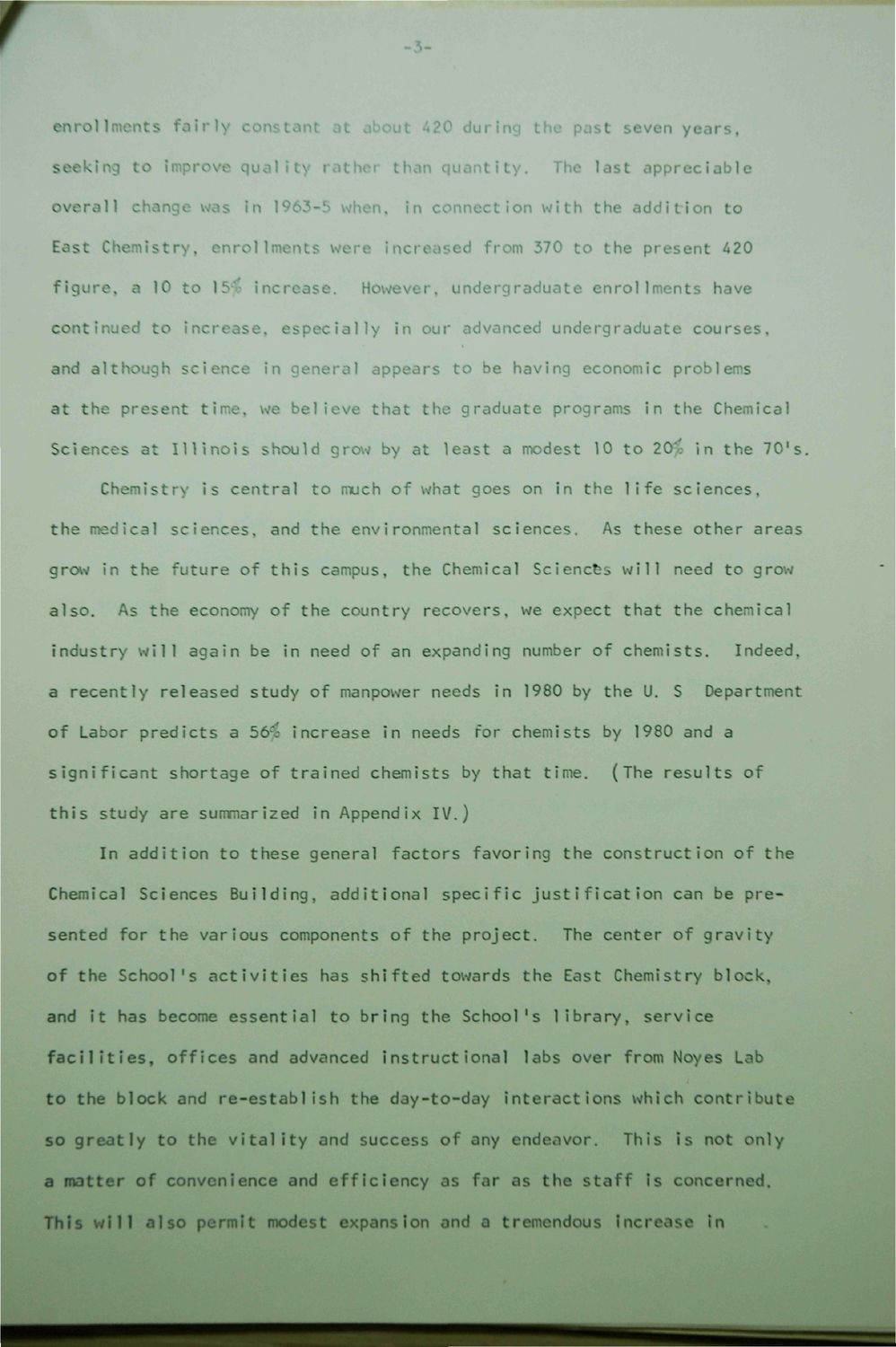Caption: Planning Report - Chemical Sciences Building
This is a reduced-resolution page image for fast online browsing.

EXTRACTED TEXT FROM PAGE:
-3- enrolIments fairly constant at about 420 during the past seven years, seeking to improve quality rather than quantity. The last appreciable overall change was in 1963-5 when, in connection with the addition to East Chemistry, enrollments were increased from 370 to the present 420 figure, a 10 to 15$ increase. However, undergraduate enrollments have continued to increase, especially in our advanced undergraduate courses, and although science in general appears to be having economic problems at the present time, we believe that the graduate programs in the Chemical Sciences at Illinois should grow by at least a modest 10 to 20> in the 70's Chemistry is central to much of what goes on in the life sciences, the medical sciences, and the environmental sciences. As these other areas grow in the future of this campus, the Chemical Sciences will need to grow also. As the economy of the country recovers, we expect that the chemical Indeed, industry will again be in need of an expanding number of chemists. a recently released study of manpower needs in 1980 by the U. S Department of Labor predicts a 56^ increase in needs for chemists by 1980 and a significant shortage of trained chemists by that time. (The results of this study are summarized in Appendix IV.) In addition to these general factors favoring the construction of the Chemical Sciences Building, additional specific justification can be presented for the various components of the project. The center of gravity of the School's activities has shifted towards the East Chemistry block, and it has become essential to bring the School's library, service facilities, offices and advanced instructional labs over from Noyes Lab to the block and re-establish the day-to-day interactions which contribute so greatly to the vitality and success of any endeavor. This is not only a matter of convenience and efficiency as far as the staff is concerned. This will also permit modest expansion and a tremendous increase in
|